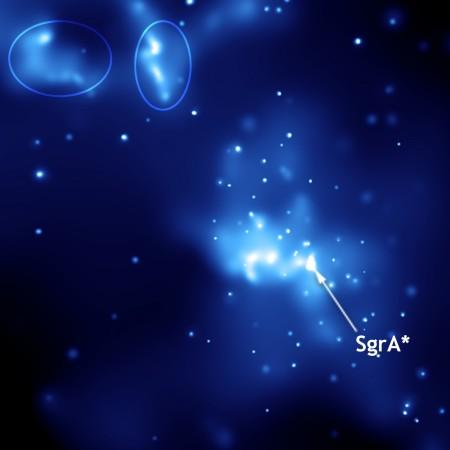
NASA has chosen its new mission, and in all honesty, it's hardly got the hallmarks of the "right stuff".
China is landing on the far side of the moon in 2018, and there's a good reason why
There'll be no groundwork for a manned mission to Mars, or even a lander to scout mining possibilities in the asteroid belt between the Red Planet and Jupiter.
What there will be, however, is an imaging X-ray Polarimetry Explorer (IXPE), which will hope to unravel the mysteries that abound in deep space: Energy pulsing quasars, neutron stars rotating at phenomenal speeds, and the eternal, if morbid, mystique of the supermassive black hole.
And the quest for knowledge will inevitably focus on that mysterious radio source that dwells at the very centre of our own Milky Way galaxy...Sagittarius A* (Sgr A*).
It is more or less an accepted fact that at the centre of most known galaxies lies a black hole. The cosmic shepherd and its celestial flock of stars, always making sure they stay together, yet all the while looking to devour them with its ravenous hunger.
At the centre of ours is believed to be Sagittarius A*. Scientists have found it hard to visually study Sgr A* due to the masses of gas and dust that lie between the Earth and the site. But German scientists, using radio telescopes in Chile, confirm that there may well be a supermassive black hole at the heart of our galaxy. They estimate its mass to be about 4.3 million times that of the Sun.
Scientists have put the diameter of Sgr A* at roughly 44 million kilometers, which is about the distance Mercury is from our Sun.
So what's with the asterisk?
It's actually quite an innocuous story. Radio signals from Sgr A* were discovered in 1974 by astronomers Bruce Balick and Robert Brown. They put the asterisk next to the name to make sure that everyone knew their find was exciting and certainly revolutionary.
Where are these radio signals coming from?
Well, these radio signals don't seem to emanate from the area where the black hole itself would be, rather they come from the region surrounding it, most likely the accretion disc (the ring of material that orbits around a black hole) or from jets of material being spewed out by the disc at speeds close the speed of light.
Will Sag A* ever pose a threat to Earth?
Certainly not in our lifetime, and if you're reading this 1,000 years from 2017, then probably not in yours either.
The acclaimed science fiction writer Larry Niven, did however put forward a situation in his Fleet of Worlds series wherein a stellar explosion caused by the black hole at the centre of our galaxy sends a wave of apocalyptic radiation outwards.
The existential crisis prompts the alien Puppeteer race to move their home planet and a few others out of its path...hence the Fleet of Worlds.
While that may be science fiction, here's hoping that NASA's IXPE mission will shed some much-needed light on what actually lies at the centre of our galaxy and how it works...and more importantly, is there anything incoming!

















